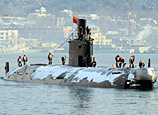
The years between the Han and Tang dynasties were especially turbulent with uprisings and kingdoms rising and falling within years.
The canal brought prosperity to the war-torn area and this lasted 300 to 500 years until the late Song Dynasty, chief curator Wang explains. At that time the emperor and the government in Henan's Kaifeng were defeated by their northern enemies and retreated south of the Huai River to Hangzhou. The region again became a frontline.
It was around that time in the late Song Dynasty, after many battles, the canal system was gradually abandoned and finally buried by heavy silt and great geological changes in the area.
When the Yuan Dynasty took over and moved capital to Beijing, the canal in this region was long gone.
"And the progress of 300 to 500 years brought by the canal was also quickly gone," Wang adds.
Among the grand stages of war that changed Chinese history, many were in this region. In 202 BC, Emperor Gao, founder of the Han Dynasty, defeated his last and strongest enemy here, forcing him to commit suicide.
In the late Song Dynasty, generals famously fought continuously to hold the border that was crucial for the dying dynasty, with its capital moved from Kaifeng to Hangzhou, to survive for another 100 years.
In late 1948 and early 1949, PLA soldiers and the Kuomintang army fought for two months in this area, until the Communists finally defeated the KMT in one of its most strategically important victories.
Even today, the area is where four provinces meet - Anhui, Henan, Jiangsu and Shandong - and its residents share more similarities to and customs with northern Chinese than those in southern areas.
Northern Anhui Province, about three hours from Shanghai by bullet train, is very different from the southern part of the province, which has gradually become a popular choice for companies expanding in the Yangtze River Delta Region. Southern Anhui, quite similar to Zhejiang and Jiangsu Provinces, is filled with small local factories and industrial zones that boost regional economic development.
The northern area is still largely agricultural and consists of vast rice paddies. It lags behind economically, so local governments have started to build large industrial zones and woo companies.
Related Reading:
>>Ceramic shards led to discovery of canal
>>Where king and concubine took their lives :Suzhou
>>Ancient canal buried in silt, sand and dust
>>New 'ancient town' rises along the Grand Canal

















 Sichuan gets its first sperm bank
Sichuan gets its first sperm bank


![]()
